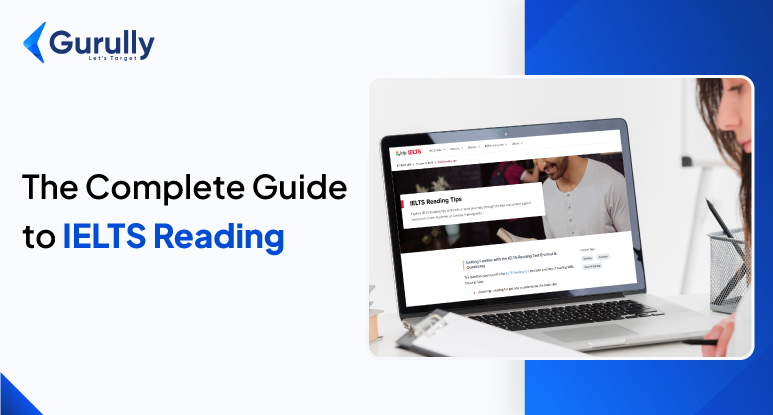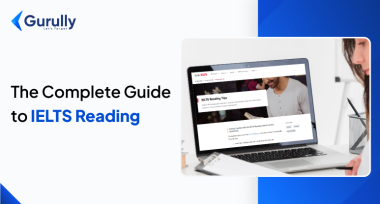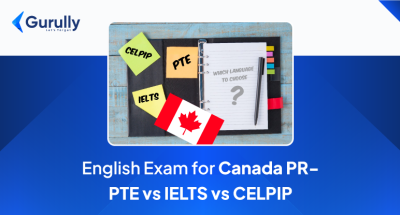IELTS Reading is part and parcel of the test, which requires a candidate to answer 40 questions in 1 hour. Therefore, you should be wholly prepared prior to sitting for the exam! This guide for different types of IELTS Reading Questions will help you get well-acquainted with the exam.
However, IELTS Online Coaching is the biggest savior to be proficient in Reading, writing, listening, and speaking. Without any further delay, let’s get started with the nitty-gritty of IELTS reading if you’re striving to acquire the desired scores in the reading paper.
Different Types of IELTS Reading Questions
There are 9 different types of IELTS Reading Questions. Let’s check out the types in detail:
Short answer questions These are often termed “comprehension” questions. Here, a student requires these skills:
◾ Identify keywords.
◾ Capability to go through the passage faster and comprehend the entire meaning.
◾ Proficiency in scanning for precise information.
◾ Fathom the question being interrogated.
◾ Contemplate possible synonyms and rephrase keywords.
Multiple Choice Questions
On general and academic IELTS Reading papers, an aspirate will likely be asked MCQs. Here, the basic one is, they should opt for the correct answers from the list of 4 options. There will be three different MCQ questions, where you need to:
◾ Select one out of four options.
◾ Select two answers out of 5 options.
◾ Select 3 answers amid 6 options.
Summary Completion
In this specific question type, you will be provided with a detailed summary of the information from the text. Also, you might either be provided with a long list of keywords or sometimes might be asked to fill out the gaps with particular words from the text. However, the summary question will assess a candidate’s ability:
◾ To perceive the inner meaning of the summary
◾ To be capable of identifying paraphrases and synonyms
◾ To scan for the right information in the text
Matching Sentence Endings
In this specific IELTS reading section, a candidate might be provided with an enormous list of incomplete sentences with no endings. Your target is to fit in the right words to sustain the flow of the sentences in terms of the reading text.
Sentence Completion
The test-takers will provide various sentences with gaps in this sentence completion question type. The candidates have to choose the right words and complete those sentences. However, you should have an excellent vocabulary to paraphrase the sentences.
True, False, Not Given
This section of IELTS reading requires students to detect if any information in a text is correct or not. Therefore, you will be provided with a wide array of factual statements, and you need to verify the text to see they are true or not.
Matching Headings Tips and Strategy
In this specific IELTS reading exam, the candidates might be asked to match various headings to the text sections. These will assess your competency to perceive the leading idea of every paragraph. The test-takers will provide 5-7 headings, and they will ask them to match every paragraph in the reading section to one heading.
Labeling a Diagram
Here, you will get a specific question, which wants you to label a diagram. Take an IELTS full-length mock test and practice this question to acquire excellent scores.
Matching Information to Paragraphs
This particular question type could be reasons, summaries, descriptions, facts, definitions, and elucidations. Here, you need to match those statements to paragraphs in the IELTS reading text.
Wondering how you’ll score in IELTS? Use our IELTS Band Score Calculator to find out instantly!
IELTS Reading Tips: The Top Strategies
This IELTS Reading exam is mainly different from any ordinary English proficiency reading test you have enrolled in school. In maximum time, reading assessments involve carefully going through a passage from the start to the end and answering the comprehension questions.
While practicing, such an approach might not work for every candidate as their capability of getting hold of things is different. There isn’t enough time to skim through each passage of the IELTS reading paper carefully and answer every question.
It’s mainly true for the Academic IELTS, where you need to read 3 stringent and longer passages within 60 minutes. On the other hand, there are a few different IELTS Reading Tips, which are shown below:
Strategy #1: Go through every passage for 3-5 minutes before glancing at the questions.
Strategy #2 & 3: Once you are done skimming, highlight or underline the keywords in the text and jot down short notes as reminders.
Strategy #4: Mug up the questions, write the keywords, and scan those texts carefully for answers.
Conclusion
The IELTS Reading section throws a gauntlet at test-takers, demanding swift comprehension and strategic navigation through complex passages in just 60 minutes. This complete guide equips you with the knowledge and tools to transform you from a nervous examinee to a confident IELTS Reading champion.
We’ve emphasized the importance of thorough preparation, and this guide serves as your launchpad. It unpacks the fundamentals of the exam, delving into the nine distinct reading question types you’ll encounter. By understanding these patterns, you can develop targeted strategies to tackle each question effectively.
FAQ:
How to solve IELTS Reading easily?
How to get 9.0 in IELTS Reading?
How to get 8.5 in IELTS Reading?
What is 27 out of 40 in IELTS Reading?
Is IELTS Reading difficult?
Also Read:
- Set Your Target Score – Know Scoring Pattern Of DUOLINGO Vs IELTS
- PTE vs CELPIP vs IELTS : Which Is Best English Test For Canada PR
- IELTS Study Guide To Prepare From Home To Score Desired Band






